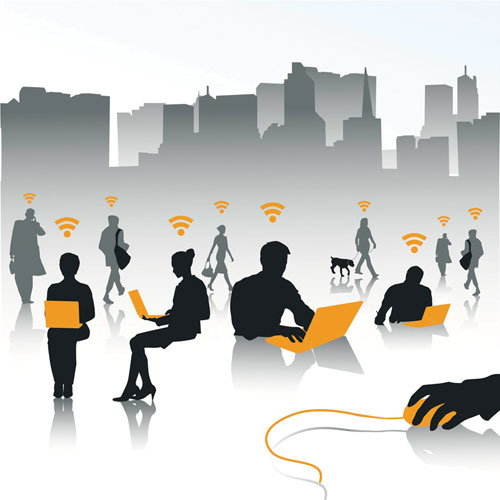dnaindia.com
Smartphones will soon command all of your connected devices, but it's been proven time and again how vulnerable they can be. Our best bet for a safer connected ecosystem might lie in our ability to create better machine-to-machine data transfer technology.
Two decades ago, Indians discovered the magic of wireless telephony, with the introduction of mobile phones and the Internet. Today, smartphones have practically become an extension of our lives. The humble mobile phone, once restricted to calls or text messages, has transformed our lives in its smart avatar. We rely on our smartphones for connectivity, productivity and various other infotainment needs. Managing a business, working on the move, shopping, healthcare – our smartphones enable us to achieve all this and much more, remotely, and in an efficient manner.
In today’s fast-paced world, we are living in the age of multi-screens and connected devices. It’s not wrong to say that millennials spend more time with their devices than with other people. Every day, we go through a series of interactions with multiple digital devices, enabling us to connect, learn, buy, compare, search, navigate, and manage almost every aspect of our lives. While each device plays an important role in our numerous daily activities, their true potential can be unleashed only when they can connect with other devices. This multi-device interaction sets the foundation of a connected ecosystem.
An array of innovations across the technology landscape has converged to make smart, connected products technically and economically feasible. After the internet, smartphone and app revolution, we are today at a tipping point with the Internet of Things (IoT), which simply means a world of internet-enabled wireless connected devices. We are headed towards a future where billions of everyday devices will soon be connected to the Internet. Smartphones, fitness trackers, and smart home appliances have already ushered in the connected ecosystem—all connected and beaming tons of data home. We are already witnessing plans and discussions on smart cities and model smart homes.
We are fortunate to witness the beginning of an era which was only a distant dream until a few years ago. Imagine a world where your fitness tracker could indicate blood pressure levels, your car could recommend routes based on traffic predictions from navigation apps, and your refrigerator could share nutrition value of food items or their freshness quotient. Some of this is already happening around us. With IoT, we can turn daily use accessories like watches, shoes, home appliances, and daily commute mechanisms like cars and trains, into powerful connected mobile computing endpoints with incremental benefits. We are just a click away from controlling our household appliances, cars, finances or work life from the ease of our smartphone or any other wearable device. This marks the beginning of new opportunities for consumers, brands and the connectivity industry at large.
IoT might seem like the latest technology fad to many however, in reality, the market opportunity is humongous. According to IT research firm Gartner, IoT will include 26 billion units installed by 2020, and by that time IoT product and service suppliers will generate incremental revenue exceeding US $300 billion, mostly in services. According to technology company Cisco, as many as 50 billion devices will be connected to the Internet by 2020. To put that in perspective, that’s nine devices for every one of the eight billion people expected to be on the planet. Companies like BlackBerry with QNX and Project Ion will have unique advantages to provide the technological building blocks, applications and services needed to deliver on the vision of IoT.
As the IoT market matures, all the sensor-enabled connected devices need to be communicated with and controlled, and smartphones—due to their widespread proliferation and ease of use—are the best possible device for human interface and interaction with these connected devices. Smartphones combined with machine-to-machine (M2M) technologies are set to play a crucial role in the era of a connected ecosystem and IoT. Being a mobile-first country and the fastest growing smartphone market in the world, India is best positioned to usher in the IoT movement with the help of smartphones and mobility devices in the hands of the common man. The possibilities are limitless, however, we will need to be wary of the related security and privacy concerns. The unprecedented increase in the number of connected devices will pose immense security threats, along with other challenges in terms of data management and analytics. It is critical to have a standardized control system in place to avoid hacking or data theft attempts. With massive amounts of machine data generated by the millions of sensors put into service, selecting the right M2M analytic applications will be key to make sense of the vast amount of data.
This is just the beginning of a new connected world – and we should prepare ourselves for the exciting ride ahead.

No comments:
Post a Comment